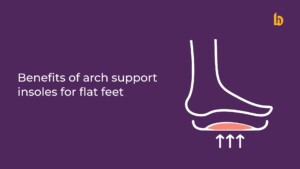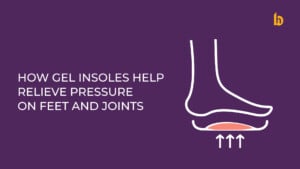You wake up early, ready to tackle your to-do list. There’s a morning run, a work commute, hours of standing or walking around, and maybe even a gym session squeezed in before dinner. But halfway through the day, your feet start to protest. There’s a throbbing under your heels, a burning sensation near your arches, and it seems like every step takes more effort than the last. For many active individuals, this scenario is all too familiar. When you’re constantly on the move, your feet carry the burden. The solution? Dual gel insoles. Designed to support dynamic lifestyles, these insoles cushion, stabilize, and reduce fatigue across long days. In this guide, we’ll explore why dual gel insoles are the unsung heroes of foot comfort and how they can transform your daily routine.
What Are Dual-Gel Insoles?
Composition and Technology
Dual gel insoles are constructed using two layers of gel materials with varying densities to target different pressure points. Typically, the heel and forefoot areas are padded with high-density gel for shock absorption, while the arch and midfoot receive softer gel for contouring support. This layered design adapts to your movements, distributing pressure evenly and minimizing strain on your joints.
Most advanced dual gel insoles also incorporate materials like EVA foam for added structure, breathable top layers for moisture control, and antimicrobial linings to prevent odor and bacteria buildup.
Difference Between Single and Dual Gel Insoles
While single gel insoles offer basic cushioning, dual gel insoles take it up a notch. The dual-layer design targets both high- and low-impact zones, offering specialized support. For those engaging in high-impact activities or enduring long hours on their feet, the comfort and performance of dual-layer gel are significantly superior to single-density designs.
Why Should Active Individuals Choose Dual Gel Insoles?
1. Enhanced Shock Absorption
Dual-density technology is engineered to absorb and distribute the energy from each foot strike. According to the Journal of Applied Biomechanics, insoles with additional shock-absorbing foam improve the cushioning of sport shoes and reduce impact forces during high-impact activities [1].
2. Reduced Foot and Joint Fatigue
Standing or walking for long hours can lead to foot fatigue and muscle soreness. A review of clinical studies supports that cushioned insoles can decrease discomfort and fatigue, especially for workers standing for extended periods [2].
3. Improved Balance and Stability
By contouring to your foot and providing support in key pressure zones, dual gel insoles enhance stability and reduce the risk of falls or missteps. A recent study demonstrated that certain insole materials improve balance, particularly in the elderly [3].
4. Long-Term Comfort for High-Impact Activities
Continuous use of feet in high-intensity environments causes wear and tear. Dual gel insoles adapt with every movement, cushioning pressure points to protect your joints. The Mayo Clinic recommends cushioned insoles for conditions like plantar fasciitis [4].
What Types of Activities Benefit Most from Dual Gel Insoles?
Running and Jogging
Repetitive motion in running causes significant impact on the heels and knees. Research shows shock-absorbing insoles decrease this impact, helping runners stay injury-free [5].
Hiking and Trail Walking
Trail surfaces stress joints and ligaments. Cushioned insoles can improve biomechanics and reduce knee joint pressure, especially for people with varying body weights [6].
Gym Workouts and Cross-Training
From lifting weights to cardio, gym routines involve multiple movement patterns. Studies again confirm that gel-infused insoles enhance foot support and reduce shock [1].
Daily Wear for Busy Professionals
Retail workers, teachers, and healthcare professionals benefit from dual gel insoles by experiencing less fatigue and better posture during long work hours [2].
How Can You Choose the Right Dual Gel Insoles?
Fit and Foot Arch Support
Match your insole to your foot’s arch: flat, normal, or high. Improper support can worsen foot pain. The Mayo Clinic advises matching arch types to the right insoles for relief [4].
Breathability and Material Quality
Insoles made with breathable fabrics, antimicrobial layers, and perforated gels keep feet dry and healthy. Mayo Clinic Store offers insoles with these features to ensure long-term hygiene [7].
Compatibility with Shoe Types
From sneakers to work boots, choose insoles designed for your shoe type. The American Podiatric Medical Association (APMA) offers guidance and seals of acceptance for foot-friendly products [8].
How Do You Maintain Dual Gel Insoles?
Cleaning Tips:
- Remove and air them out daily
- Wipe with a damp cloth and mild soap weekly
- Avoid machine washing or drying
When to Replace Them
Replace insoles every 6–12 months or sooner if cushioning degrades or odor develops. The APMA recommends replacing worn-out insoles for ongoing foot health [8].
Why Are Dual Gel Insoles a Game-Changer for Active Lifestyles?
Active living demands reliable support, and your feet deserve nothing less. Dual gel insoles cushion every step, protect your joints, and reduce fatigue, keeping you going longer and stronger. Whether you’re working, walking, lifting, or exploring, these insoles deliver the comfort your lifestyle requires—every single day.
Frequently Asked Questions:
1. Can dual gel insoles help with plantar fasciitis?
Yes. They provide targeted heel cushioning and arch support to reduce inflammation and pain [4].
2. How long do dual gel insoles last?
Typically 6-12 months, depending on usage. If support feels diminished, it’s time to replace them [8].
3. Can I use them in multiple shoe types?
Yes, as long as the insole fits comfortably. Trim-to-fit versions are ideal for switching between shoes.
References:
- Effects of Insoles and Additional Shock Absorption Foam
- Systematic Review on Insoles and Fatigue
- Effects of Insole Materials on Balance
- Mayo Clinic – Plantar Fasciitis Treatment
- Shock Absorbing Insoles During Walking
- Insoles and Knee Biomechanics
- Mayo Clinic Store – Dual Gel Insoles
- APMA – Approved Footwear Products















